Title
Copyright
Contents
Preface
1 Introduction
1.1 A brief overview of fMRI
1.2 The emergence of cognitive neuroscience
1.3 A brief history of fMRI analysis
1.4 Major components of fMRI analysis
1.5 Software packages for fMRI analysis
1.6 Choosing a software package
1.7 Overview of processing streams
1.8 Prerequisites for fMRI analysis
2 Image processing basics
2.1 What is an image?
2.2 Coordinate systems
2.3 Spatial transformations
2.4 Filtering and Fourier analysis
3 Preprocessing fMRI data
3.1 Introduction
3.2 An overview of fMRI preprocessing
3.3 Quality control techniques
3.4 Distortion correction
3.5 Slice timing correction
3.6 Motion correction
3.7 Spatial smoothing
4 Spatial normalization
4.1 Introduction
4.2 Anatomical variability
4.3 Coordinate spaces for neuroimaging
4.4 Atlases and templates
4.4.1 The Talairach atlas
4.4.2 The MNI templates
4.5 Preprocessing of anatomical images
4.5.1 Bias field correction
4.5.2 Brain extraction
4.5.3 Tissue segmentation
4.6 Processing streams for fMRI normalization
4.7 Spatial normalization methods
4.7.1 Landmark-based methods
4.7.2 Volume-based registration
4.7.3 Computational anatomy
4.8 Surface-based methods
4.9 Choosing a spatial normalization method
4.10 Quality control for spatial normalization
4.11 Troubleshooting normalization problems
4.12 Normalizing data from special populations
5 Statistical modeling: Single subject analysis
5.1 The BOLD signal
5.2 The BOLD noise
5.2.1 Characterizing the noise
5.2.2 High-pass filtering
5.2.3 Prewhitening
5.2.4 Precoloring
5.3 Study design and modeling strategies
6 Statistical modeling: Group analysis
6.1 The mixed effects model
6.1.1 Motivation
6.1.2 Mixed effects modeling approach used in fMRI
6.1.3 Fixed effects models
6.2 Mean centering continuous covariates
6.2.1 Single group
6.2.2 Multiple groups
7 Statistical inference on images
7.1 Basics of statistical inference
7.2 Features of interest in images
7.3 The multiple testing problem and solutions
7.3.1 Familywise error rate
7.3.1.1 Bonferroni correction
7.3.1.2 Random field theory
7.3.1.3 Parametric simulations
7.3.1.4 Nonparametric approaches
7.3.2 False discovery rate
7.3.3 Inference example
7.4 Combining inferences: masking and conjunctions
7.5 Use of region of interest masks
7.6 Computing statistical power
8 Modeling brain connectivity
8.1 Introduction
8.2 Functional connectivity
8.2.1 Seed voxel correlation: Between-subjects
8.2.2 Seed voxel correlation: Within-subjects
8.2.2.1 Avoiding activation-induced correlations
8.2.3 Beta-series correlation
8.2.4 Psychophysiological interaction
8.2.4.1 Creating the PPI regressor
8.2.4.2 Potential problems with PPI
8.2.5 Multivariate decomposition
8.2.5.1 Principal components analysis
8.2.5.2 Independent components analysis
8.2.5.3 Performing ICA/PCA on group data
8.2.6 Partial least squares
8.3 Effective connectivity
8.4 Network analysis and graph theory
8.4.1 Small world networks
8.4.2 Modeling networks with resting-state fMRI data
8.4.3 Preprocessing for connectivity analysis
9 Multivoxel pattern analysis and machine learning
9.1 Introduction to pattern classification
9.1.1 An overview of the machine learning approach
9.1.1.1 Features, observations, and the “curse of dimensionality”
9.1.1.2 Overfitting
9.2 Applying classifiers to fMRI data
9.3 Data extraction
9.4 Feature selection
9.5 Training and testing the classifier
9.5.1 Feature selection/elimination
9.5.2 Classifiers for fMRI data
9.5.2.1 Linear vs. nonlinear classifiers
9.5.2.2 Computational limitations
9.5.2.3 Tendency to overfit
9.5.3 Which classifier is best?
9.5.4 Assessing classifier accuracy
9.6 Characterizing the classifier
10 Visualizing, localizing, and reporting fMRI data
10.1 Visualizing activation data
10.2 Localizing activation
10.2.1 The Talairach atlas
10.2.2 Anatomical atlases
10.2.3 Probabilistic atlases
10.2.4 Automated anatomical labeling
10.3 Localizing and reporting activation
10.4 Region of interest analysis
10.4.1 ROIs for statistical control
10.4.2 Defining ROIs
10.4.3 Quantifying signals within an ROI
10.4.3.1 Voxel-counting
10.4.3.2 Extracting signals for ROI analysis
10.4.3.3 Computing percent signal change
10.4.3.4 Summarizing data within an ROI
Appendix A: Review of the General Linear Model
A.1 Estimating GLM parameters
A.2 Hypothesis testing
A.3 Correlation and heterogeneous variances
A.4 Why "general'' linear model?
Appendix B: Data organization and management
B.1 Computing for fMRI analysis
B.2 Data organization
B.3 Project management
B.4 Scripting for data analysis
Appendix C: Image formats
C.1 Data storage
C.2 File formats
Bibliography
Index
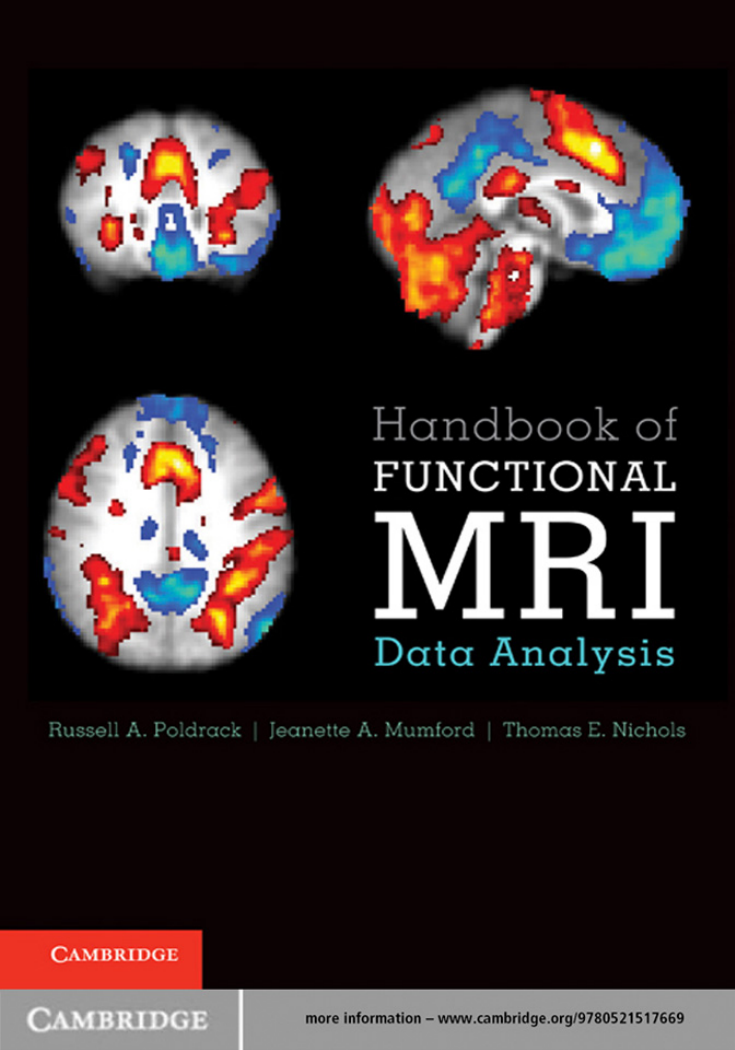
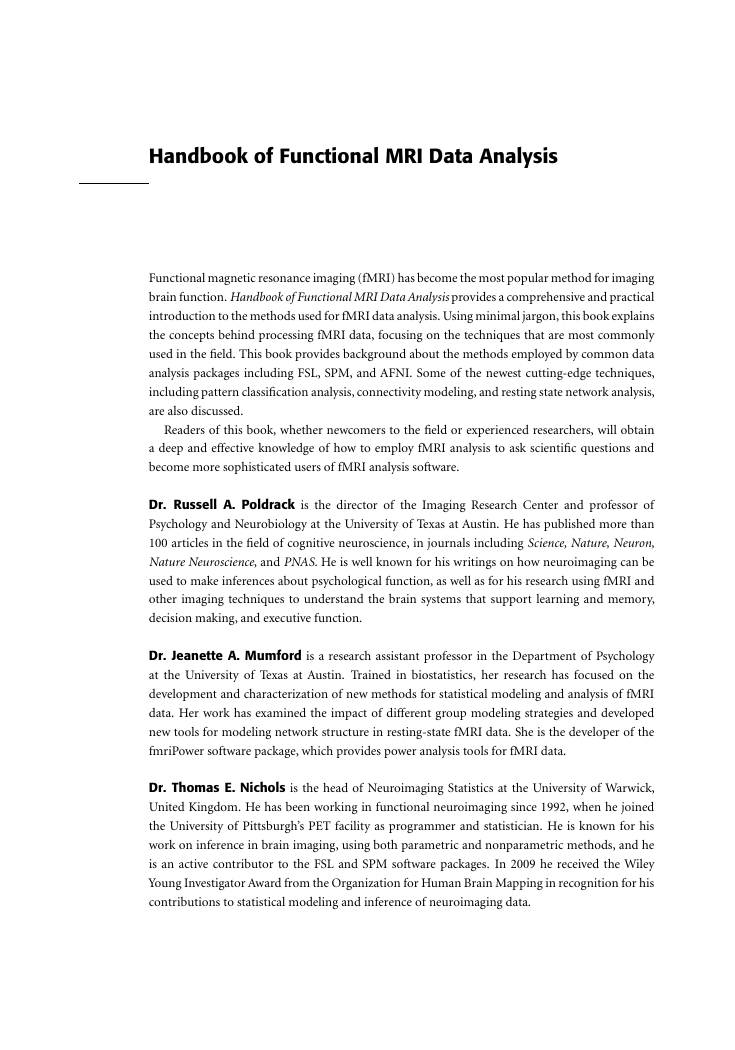


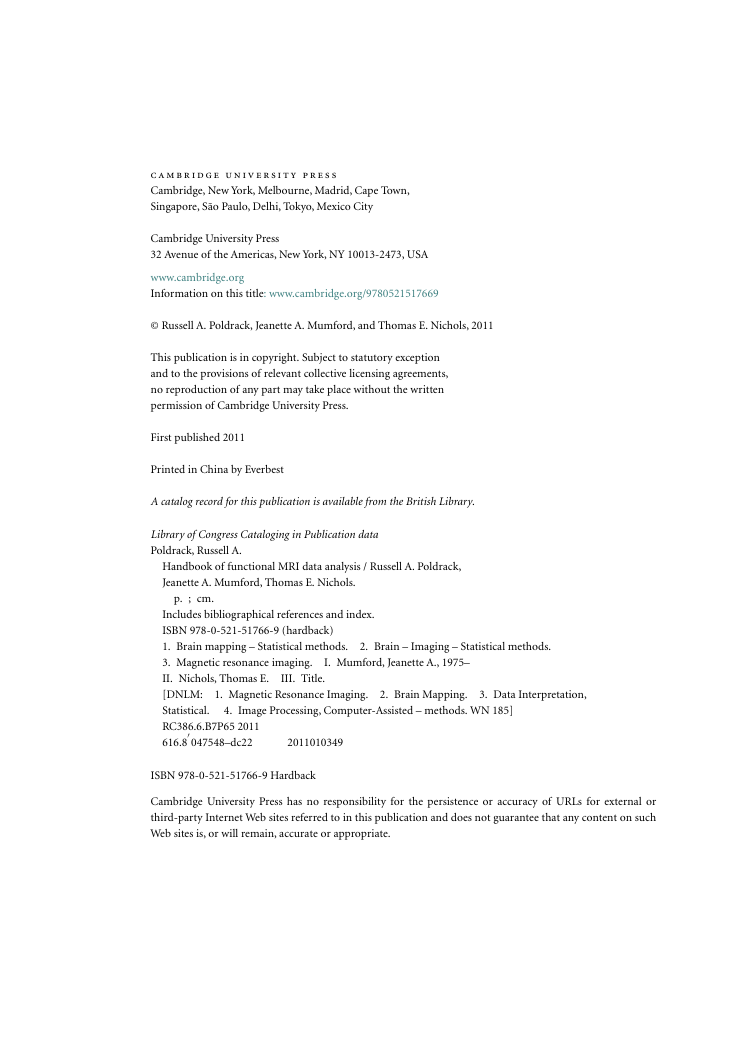
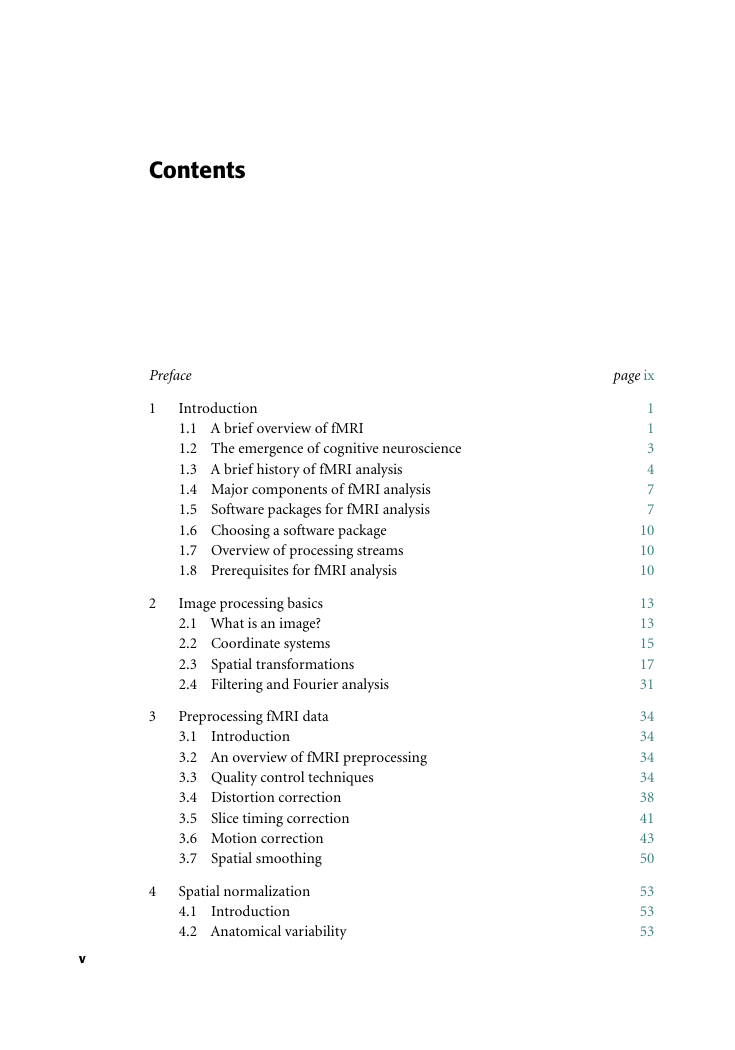
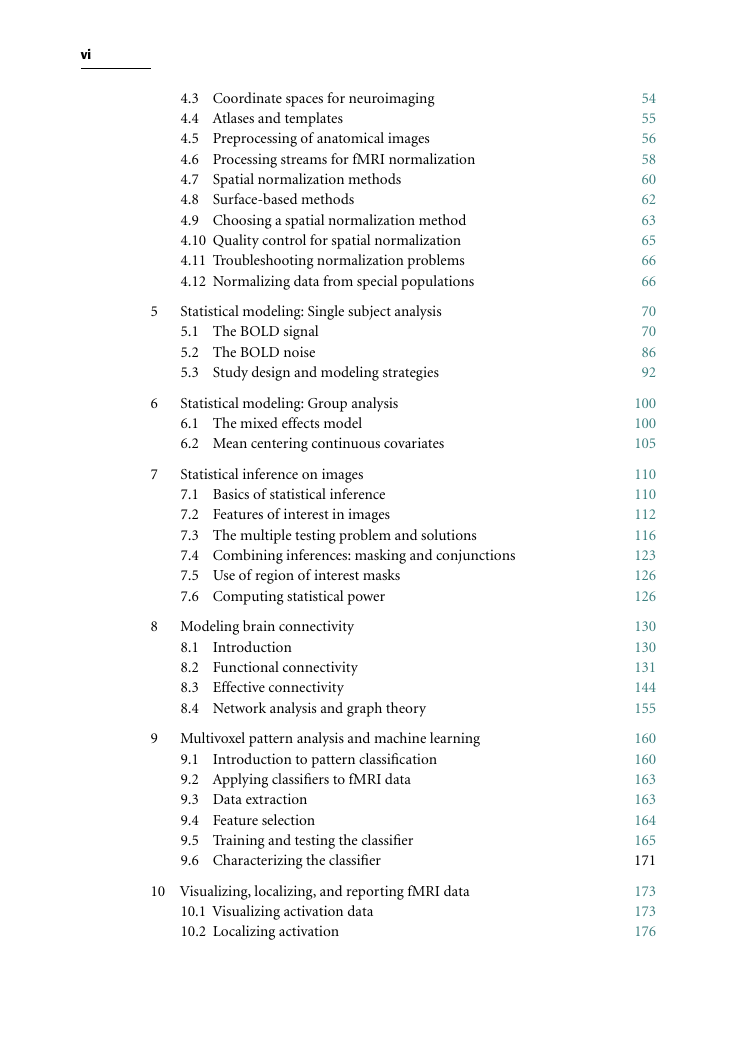









 2023年江西萍乡中考道德与法治真题及答案.doc
2023年江西萍乡中考道德与法治真题及答案.doc 2012年重庆南川中考生物真题及答案.doc
2012年重庆南川中考生物真题及答案.doc 2013年江西师范大学地理学综合及文艺理论基础考研真题.doc
2013年江西师范大学地理学综合及文艺理论基础考研真题.doc 2020年四川甘孜小升初语文真题及答案I卷.doc
2020年四川甘孜小升初语文真题及答案I卷.doc 2020年注册岩土工程师专业基础考试真题及答案.doc
2020年注册岩土工程师专业基础考试真题及答案.doc 2023-2024学年福建省厦门市九年级上学期数学月考试题及答案.doc
2023-2024学年福建省厦门市九年级上学期数学月考试题及答案.doc 2021-2022学年辽宁省沈阳市大东区九年级上学期语文期末试题及答案.doc
2021-2022学年辽宁省沈阳市大东区九年级上学期语文期末试题及答案.doc 2022-2023学年北京东城区初三第一学期物理期末试卷及答案.doc
2022-2023学年北京东城区初三第一学期物理期末试卷及答案.doc 2018上半年江西教师资格初中地理学科知识与教学能力真题及答案.doc
2018上半年江西教师资格初中地理学科知识与教学能力真题及答案.doc 2012年河北国家公务员申论考试真题及答案-省级.doc
2012年河北国家公务员申论考试真题及答案-省级.doc 2020-2021学年江苏省扬州市江都区邵樊片九年级上学期数学第一次质量检测试题及答案.doc
2020-2021学年江苏省扬州市江都区邵樊片九年级上学期数学第一次质量检测试题及答案.doc 2022下半年黑龙江教师资格证中学综合素质真题及答案.doc
2022下半年黑龙江教师资格证中学综合素质真题及答案.doc